Choosing an electric kiln is a significant decision that requires careful consideration of various factors such as size, temperature range, and energy efficiency. With their precise temperature control and ease of use, these modern marvels have revolutionized the art of pottery making. From understanding your needs to selecting the right size and features, let’s embark on this adventure together toward finding the perfect electric kiln for your creative endeavors.
For firing ceramics, glass, or metalwork, the choice of kiln can make all the difference between masterful creations and disappointing results. From size and temperature range to features like programmable settings and ventilation options, the considerations can be overwhelming.
Step 1: Placement of Your Kiln
To place your kiln, one important factor to consider is ventilation. Proper ventilation is crucial for the efficiency and safety of your kiln. Placing your kiln in a well-ventilated area will help to control temperature fluctuations and prevent the buildup of harmful fumes.
The location of your kiln should also take into account accessibility. Having easy access to your kiln will make it more convenient for loading and unloading pottery pieces. Consider placing your kiln near a workspace or storage area to streamline the creative process.
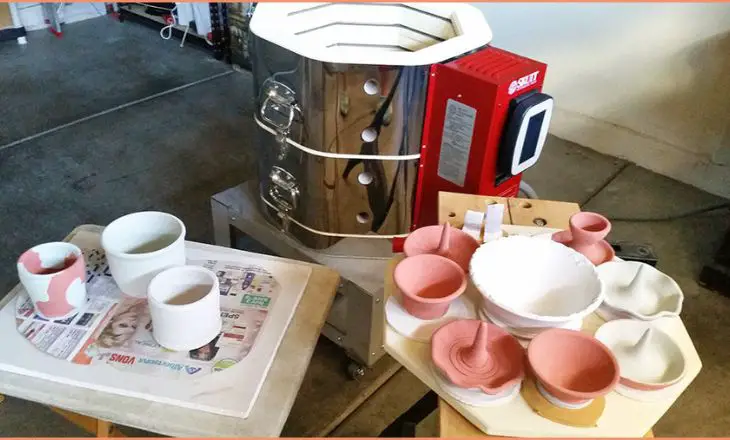
Don’t forget about the surrounding environment when deciding on a placement for your kiln. Avoid placing it near flammable materials or in high-traffic areas to minimize potential hazards. By carefully considering these factors, you can ensure that your kiln is positioned in an optimal location for both functionality and safety.
Selecting Your Area
To select the placement of your kiln, there are several factors to consider beyond just convenience. The location should have proper ventilation and access to electricity, as well as enough space for you to move around comfortably while working. Think about how the temperature fluctuations in that area might affect your firing process and adjust accordingly.
Another important aspect is the proximity of your kiln to other important areas in your workspace. For example, having it close to your storage area for clay and glazes can streamline your workflow and make the overall process more efficient. By strategically placing your kiln in a central location within your studio, you can create a functional and productive environment that enhances both your creativity and productivity.
Consider how natural light plays into the equation as well – having ample sunlight near your kiln can not only improve visibility during work but also create a more inviting atmosphere that boosts creativity. Take some time to evaluate different areas within your studio or workspace before settling on a final placement for your kiln.
Measure The Space Available For The Kiln
Before purchasing a kiln for your pottery studio, it is crucial to accurately measure the available space where you intend to place it. Consider not only the physical dimensions of the kiln itself but also the clearance space needed around it for proper ventilation and safety precautions. Remember that a kiln requires ample space both horizontally and vertically to ensure optimal functionality and efficiency in firing your ceramic pieces.
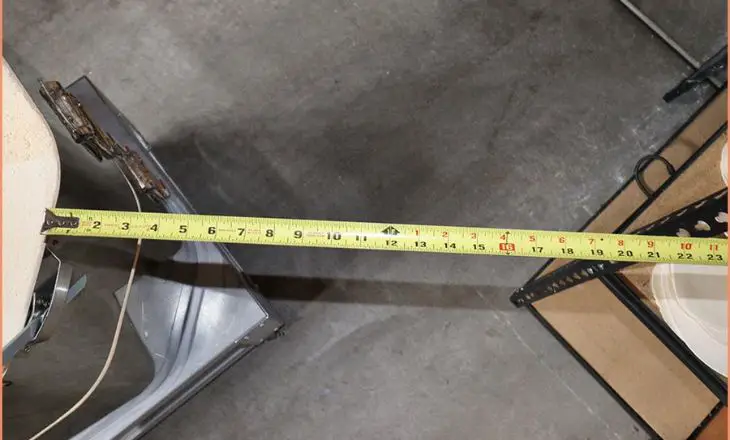
When determining the placement of your kiln, think beyond just finding an empty corner in your studio. Consider factors such as ease of access, proximity to electrical outlets, and potential hazards in the surrounding area. Placing your kiln near a well-ventilated window or door can help dissipate heat and fumes more effectively during firing cycles. Locating your kiln in a designated workspace away from high-traffic areas can create a focused environment conducive to creativity and productivity in your pottery practice.
Measuring the space available for your kiln is not just about fitting it into your studio but also about creating an environment that enhances your ceramic work processes. By carefully considering these factors before installing your kiln, you can optimize its performance while ensuring a safe and efficient firing experience for both you and your pottery creations.
Step 2: Think About The Shape And Size Of Your Planned Work
When creating a piece of work, whether it be a painting, sculpture, or even a business plan, the shape and size of your creation play a crucial role in its overall impact. Consider how the scale of your project can evoke different emotions and responses from the viewer or audience. A larger-than-life sculpture may command attention and awe, while a smaller, more intimate work might invite closer inspection and contemplation.
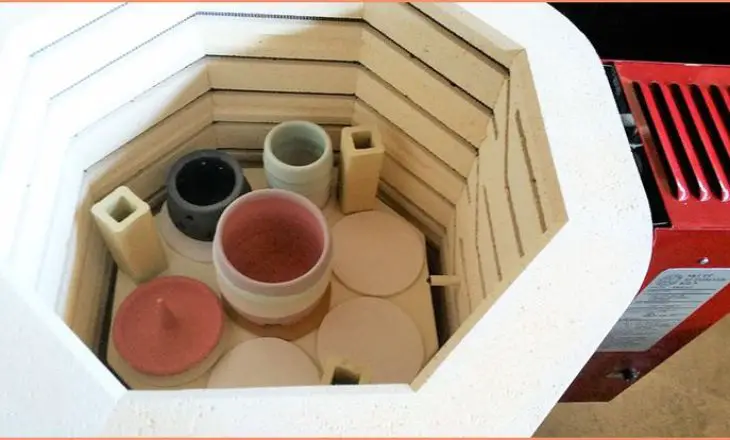
The shape of your work also contributes to its visual appeal and narrative. Are you aiming for fluid curves that suggest movement and grace, or sharp angles that convey strength and structure? Exploring different shapes can add depth and complexity to your creation, allowing for multiple layers of interpretation. By carefully considering the shape and size of your planned work, you have the opportunity to enhance its message and engage with your audience on a deeper level.
Up To 9 x 11 Inches:
Working with smaller Electric Kilns, measuring up to 9 by 11 inches, you have the advantage of being able to create intricate and delicate pieces of pottery with precision. The compact size of these kilns makes them ideal for artists who need a more portable option or have limited space in their studio. The lower power requirements make them an efficient choice for smaller projects without compromising on quality.
When deciding on which Electric Kiln size to choose, it’s important to consider the shape and size of your planned work. The 9 by 11-inch kilns are perfect for firing beads, small items, or doll parts due to their compact dimensions.
18 By 18 Inches:
Consider the shape and size of your planned work when choosing a kiln. The 18 by 18-inch Kiln is ideal for hobbyists who enjoy creating small pieces every other weekend. With this size, you can experiment with making plates, bowls, and pots without overwhelming the kiln’s capacity. By carefully selecting your projects, you can maximize the potential of this compact kiln.
One benefit of using a smaller kiln like the 18 by 18-inch model is that it allows for more frequent firing sessions without requiring a large amount of workspace. This can be advantageous for hobbyists looking to refine their craft through consistent practice. The limitations imposed by the smaller size can inspire creativity and encourage thoughtful consideration of each piece being fired.
23 By 27 Inches:
When considering a kiln size for your home pottery studio, the dimensions of 23 by 27 inches can be a versatile option. This size accommodates tall pots and a substantial number of plates and bowls, making it suitable for various projects. Before settling on this popular choice, it’s crucial to think about the shape and size of your planned work. The kiln’s capacity should align with your production goals and intended pieces to ensure efficiency.
While the 23 by 27-inch kiln is practical for many potters, those aiming for larger-scale production may find it limited. As you evaluate kiln sizes, remember that scaling up from personal projects to small-scale production requires careful consideration of firing capacity. It’s essential to assess not just current needs but also future aspirations when selecting the ideal kiln size for your creative endeavors.
29 By 27 Inches:
When setting up an Electric Kiln for your pottery business, the size and shape of your planned work should be at the forefront of your considerations. The 29 by 27-inch Kiln is a versatile option that can accommodate larger production needs, making it ideal for casting multiple 24-size jugs or 10-inch oval dishes. By understanding the dimensions of your creations, you can optimize the efficiency and output of your kiln.
With this size kiln, you have the opportunity to experiment with various forms and designs that can distinguish your pottery business in a competitive market. The ability to craft diverse pieces within a single firing session not only saves time but allows for greater artistic exploration.
Shape:
When deciding between a round or square unit for your kiln, it’s essential to consider the shape and size of your planned work. A square kiln often provides more efficiency when working with certain types of ware due to its straight edges and corners, allowing for optimal placement of pieces. The cost difference between a round and square kiln can be substantial, leading you to weigh the benefits against the financial savings.
A round kiln might fit better in a small area due to its compact nature and lack of sharp corners that could obstruct movement. But, if you require stacking multiple pieces or loading different shapes and sizes simultaneously, a square unit could provide more flexibility in arranging your work efficiently inside the kiln.
Things To Consider
When choosing a kiln, it’s crucial to consider the dimensions of the largest piece you envision firing. The shape and size of your pottery will dictate the kiln size needed for optimal results. Think about the quantity of pieces you plan to produce in a certain timeframe. This will help determine if your chosen kiln can handle your production capacity effectively.
To purchase a new kiln, remember that shape plays an essential role in firing efficiency. Different shapes distribute heat unevenly within the chamber, affecting the consistency of your ceramics.
Do You Intend To Fire A Few Large Loads Or Several Small Ones?
When debating whether to fire a few large loads or several small ones, it’s essential to consider the shape of the kiln you are investing in. Larger kilns for ceramics typically offer a lower cost per cubic foot of firing space, making them a more economical choice in the long run. The key lies in predicting your future needs – opting for a larger kiln than you currently require can save you the hassle of outgrowing your equipment as you gain experience and expand your creative projects.
The shape of a kiln influences its efficiency and versatility. A larger kiln not only accommodates bigger pieces but also allows for more flexibility in arranging multiple items simultaneously. This can lead to enhanced productivity and creativity in your firing process, enabling you to experiment with various sizes and compositions without constraint.
To fire ceramics, the decision between loading a few large loads or several small ones can have a significant impact on the outcomes. Larger loads may offer efficiency in terms of time and energy usage, but smaller loads allow for more precise control over the firing process.
Step 3: What Kinds Of Ware Do You Intend To Fire?
When considering the types of wares to fire in your electric kiln, it’s essential to match the firing temperatures with your specific ceramics or porcelain projects. Larger kilns are typically more efficient at achieving cone 8 and cone 10 firing temperatures needed for these materials. Industrial-level production volumes exceeding 15 to 20 cubic feet may be better suited for gas kilns due to their capacity and cost-effectiveness.
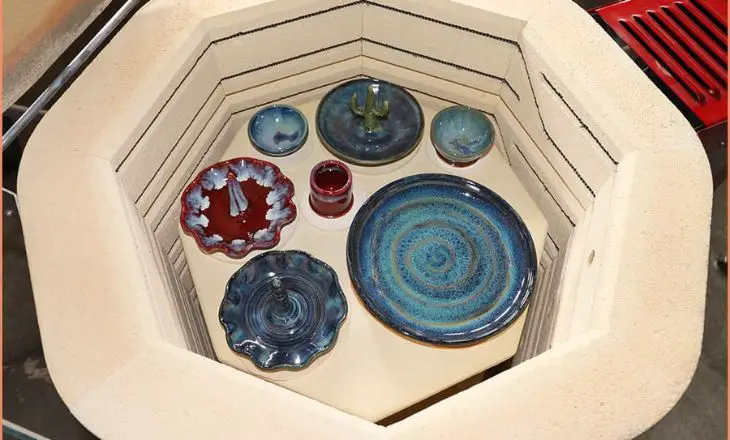
One thing to keep in mind is the electrical requirements for larger electric kilns, as laying out electrical lines can incur additional expenses. Gas kilns offer a viable alternative for large-scale production needs, providing ample space and efficiency for firing larger batches of wares.
The Maximum Firing Temperature Is A Very Important Consideration
Consider the longevity and reliability of your kiln when choosing the appropriate maximum firing temperature for your projects. High-firing endeavors require kilns that can sustain cone 8 to Cone 10 temperatures, ensuring consistent results over time. The thickness of the kiln walls and elements is crucial for withstanding the demands of Cone 10 firings, enhancing both performance and durability.
When contemplating what types of ware you aim to fire, remember that the intended use of your pieces influences the required maximum firing temperature. Whether crafting delicate ceramics or sturdy functional objects, selecting a kiln with an adequate firing range is essential for achieving the desired outcomes.
Step 4: Consider The Power Supply Available
When setting up a new electronic device, one key consideration often overlooked is the power supply available. It’s essential to ensure that the power source matches the device’s requirements, as using an incompatible power supply can damage your equipment or lead to subpar performance. This is especially crucial when dealing with sensitive electronics or high-powered devices that require a stable and appropriate voltage input.
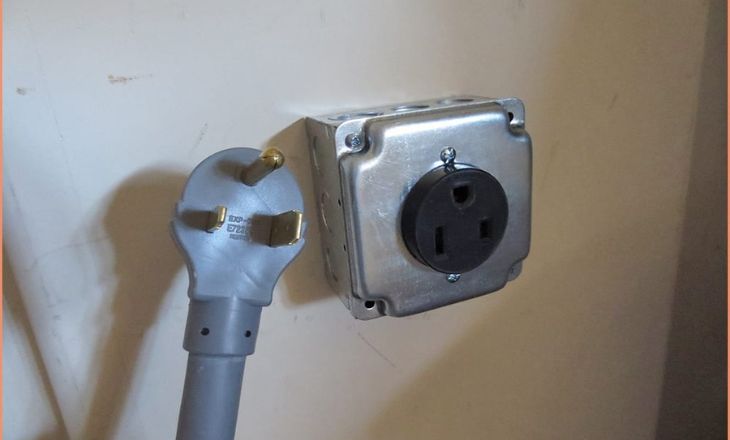
Consider investing in surge protectors or uninterruptible power supplies to safeguard your devices from sudden spikes or drops in electricity, providing peace of mind and prolonging the lifespan of your equipment. Another aspect to consider when evaluating the power supply available is energy efficiency. Opting for energy-efficient devices and ensuring they are powered by clean energy sources can reduce your carbon footprint while also saving you money on utility bills in the long run.
Ensuring that your devices are receiving consistent and appropriate levels of electrical power can prevent overheating, fires, or other hazards associated with electrical malfunctions. Prioritize regular maintenance checks on your power sources to identify any potential issues early on before they escalate into bigger problems that could pose risks to both your equipment and personal safety.
Step 5: Write Down Your Budget For Choosing An Electric Kiln
Understanding and committing to a budget is not just about restricting spending, but rather a strategic tool for financial empowerment and freedom. By clearly outlining your expenses and income, you gain a holistic view of your financial landscape, enabling informed decisions and prioritization of needs versus wants. The discipline of budgeting cultivates mindfulness around money management, fostering a sense of control and security in uncertain times.
Embracing a budget mindset allows for flexibility within set parameters, empowering you to adapt to changing circumstances without compromising long-term financial goals. Ultimately, writing down your budget is an act of self-care and respect towards yourself and your future well-being – a practice that transcends mere number crunching to become a transformative tool for personal growth and prosperity.
Step 6: Decide If You Want A Top-Loading Or A Front-Loading Unit
To choose between a top-loading or front-loading washing machine, one key factor to consider is the amount of space in your laundry room. Front-loading units are generally more compact and can be stacked with a dryer to save space. However, top-loading machines have larger openings that make loading and unloading easier for those who may have difficulty bending down.
Another important consideration is energy efficiency. Front-loading machines are typically more energy-efficient than their top-loading counterparts, as they use less water and detergent. This not only helps the environment but also saves you money on utility bills in the long run.
If noise levels are a concern for you, front-loading units tend to be quieter during operation compared to top-loading machines. This can make a difference, especially if your laundry room is located near living spaces where noise could be disruptive.
Front-Loading Kilns:
Front-loading kilns, also known as top-loading kilns, have been a staple in the ceramic industry for years. Their design allows for easy loading and unloading of pottery, making them a popular choice among artists and hobbyists. One key advantage of front-loading kilns is their efficiency in heat distribution, resulting in more consistent firing results.
Another benefit of front-loading kilns is their versatility in accommodating various shapes and sizes of pottery. With adjustable shelving options and customizable settings, artists have the freedom to experiment with different techniques and designs.
Top Loading Kilns:
Top-loading kilns offer a unique advantage in the world of pottery and ceramics, providing easier access to the firing chamber for loading and unloading materials. This design allows artists to arrange their pieces more strategically, ensuring even heat distribution throughout the firing process.
One key benefit of top-loading kilns is their ability to reach high temperatures quickly and efficiently, saving time and energy during the firing process. The ease of accessing the interior of a top-loading kiln makes it simpler to monitor the progress of the firing cycle and make adjustments as needed, resulting in more consistent and successful outcomes for artists seeking precision in their work.
Step 7: Should You Get A Manual Or Automatic Kiln?
To choose between a manual or automatic kiln, consider your experience level and comfort with technology. A manual kiln offers more control over firing processes, allowing artisans to adjust settings according to their preferences. But, An automatic kiln offers convenience and consistency in firing cycles, making it ideal for those who prefer a hands-off approach. Those new to pottery may find an automatic kiln easier to use and less intimidating than a manual one.
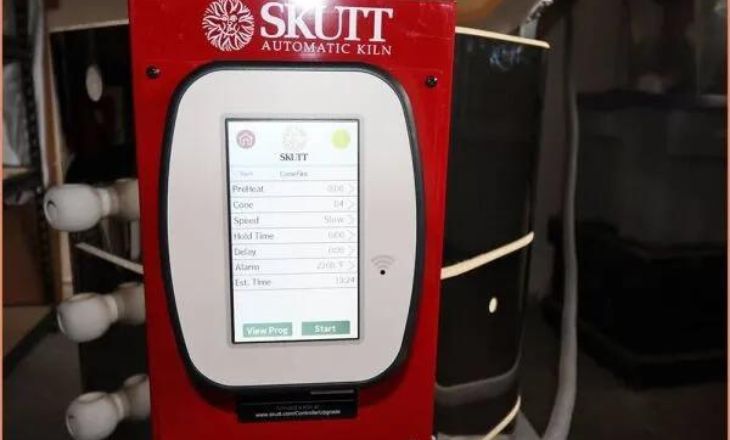
Step 8: Firebrick Or Ceramic Fiber?
To choose between firebrick and ceramic fiber for your fireplace or kiln, there are several factors to consider. Firebrick is a traditional choice known for its durability and heat-retention properties, making it ideal for high-temperature applications. However, ceramic fiber offers superior insulation and energy efficiency due to its lightweight composition and ability to withstand extreme temperatures.
However, recent advancements in technology have blurred the lines between these two materials. Some manufacturers offer hybrid products that combine the best qualities of firebrick and ceramic fiber, providing the perfect balance of strength and insulation. These innovative solutions are revolutionizing the industry by offering improved performance and longevity while reducing maintenance costs in the long run.
Step 9: How Thick Should The Insulating Firebrick Wall Be?
To determine the thickness of the insulating firebrick wall, several factors need to be considered. The type of furnace or kiln being used the temperature requirements, and the level of insulation needed all play a role in deciding on the appropriate thickness. In general, a thicker insulating firebrick wall provides better insulation against heat loss, but it also adds weight and can impact the overall efficiency of the furnace.
One common approach is to follow industry standards and guidelines for specific applications to determine the ideal thickness of the insulating firebrick wall. Consulting with experts or engineers in thermal insulation can provide valuable insights into optimizing the design and performance of your furnace or kiln.
Step 10: Single Piece Or Sectional Kiln?
A single-piece kiln provides simplicity and ease of use, with all components built into one unit for easy operation. While, a sectional kiln allows for more customization and expansion, as you can add or remove sections based on your firing needs.
A single-piece kiln may be more suitable for smaller studios with limited space, while a sectional kiln offers scalability for larger projects and greater firing capacity over time. Think about the types of projects you typically work on – if you require precise temperature control or specialized firing techniques, a sectional kiln with multiple zones may be more beneficial in achieving consistent results.
Step 11: What Elements Are The Best?
To select the best elements, it’s hard to ignore the timeless appeal of water and fire. Water symbolizes tranquility, fluidity, and renewal, while fire represents passion, transformation, and energy. These contrasting elements coexist in harmony in nature, each crucial for the balance of life.
The element of air brings a sense of freedom and movement. It is invisible yet essential for sustaining life on Earth. The ethereal quality of air allows us to soar high above and experience vast spaces with a lightness that is unmatched by any other element. In unity with water and fire, air completes the cycle of interconnected elemental energies that surround us.
Conclusion
Choosing an electric kiln is an important decision that necessitates thorough consideration of several factors, including size, temperature range, and energy efficiency. By weighing these factors against your specific needs and budget, you can make an informed choice that will serve you well in your artistic endeavors.
Remember to also consider the reputation of the manufacturer and seek recommendations from experienced potters to ensure you are investing in a high-quality kiln. With the right electric kiln, you can unlock endless possibilities for creativity and take your pottery skills to new heights. Make sure to take your time researching and evaluating options before making a final decision.
FAQs
What Are The Electric Requirements For A Kiln?
The electric requirements for a kiln typically include a dedicated 240V outlet and a power supply ranging from 30 to 50 amps, depending on the kiln’s size and model. Ensure that your electrical circuit can handle the specific power rating and wattage of your kiln as specified by the manufacturer.
What Is The Design Of An Electric Kiln?
An electric kiln typically features an insulated, firebrick-lined chamber with heating elements embedded in the walls. It includes a door for loading materials, a digital or manual controller for setting temperature and firing schedules, and ventilation for heat dissipation.
What Is The Most Efficient Kiln Design?
The most efficient kiln design often includes forced draft burners, which improve combustion efficiency and heat distribution by actively mixing fuel with air. This results in more consistent firing temperatures and reduced fuel consumption compared to natural draft kilns.
